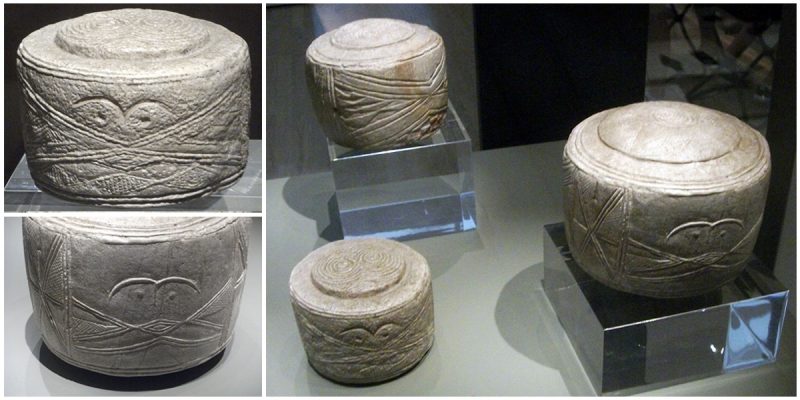Dating from the Neolithic Britain, the Folkton Drums are three of the most remarkable decorated chalk objects in the shape of drums or solid cylinders. These objects were found in a round barrow on Folkton Wold, near Filey in East Yorkshire in 1899 by the amateur archaeologist Canon William Greenwell.
The Neolithic grave dates to the time of Stonehenge estimated between 2600 and 2000 BC. Several more bodies were found close by.
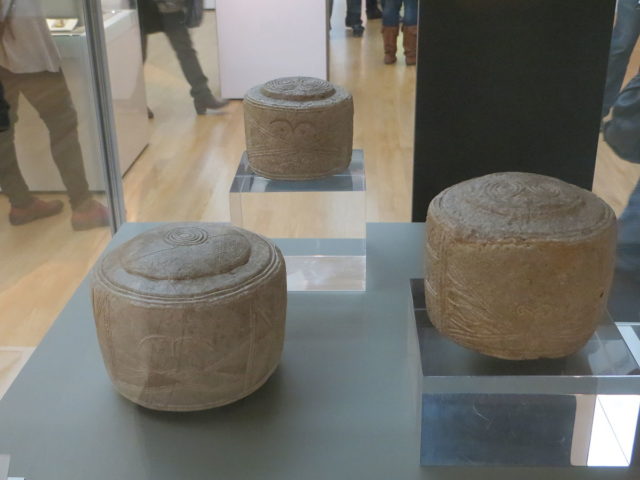
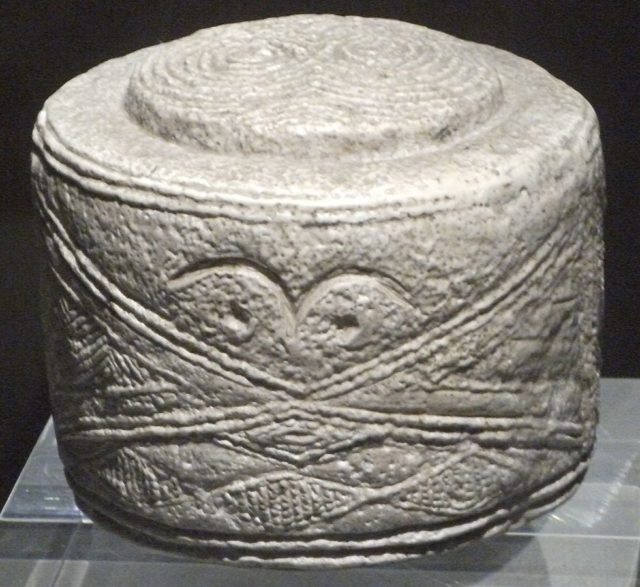
The custom of burying individuals with ‘special’ grave goods had begun by about 3000 BC. According to archaeologists, the child’s grave dates between 2600 and 2000 BC and the rarity of this find suggests that the child came from an elite social group (a symbol of the special social position of the family to which the deceased person belonged).
These drums are unique in the archaeological record because nothing similar is known anywhere in the British Isles from any time in the prehistoric period.
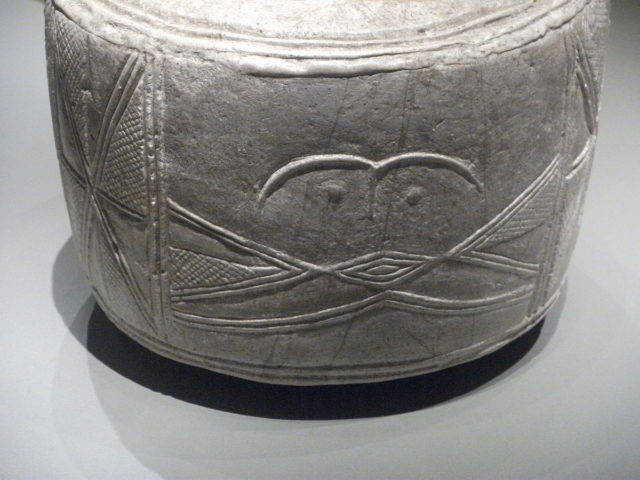
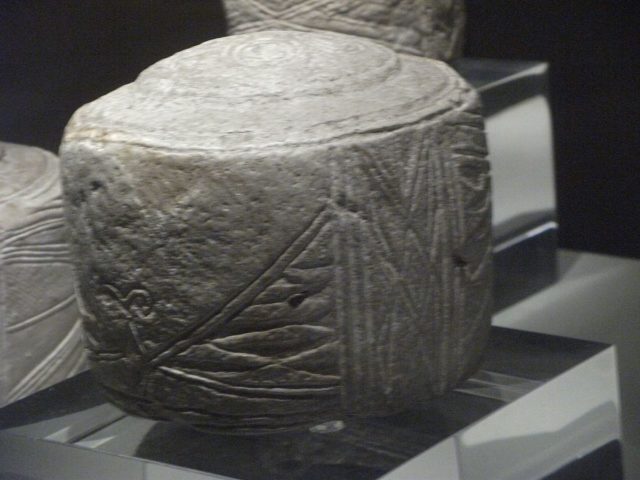
The cylinders had been placed behind the head and hips of the body of a child in an oval grave close to the outer of two concentric ditches. The drums, made from chalk (that was quarried locally) are decorated with geometric patterns and stylized shapes that could be interpreted as human faces and range in size from 146mm in diameter through 124 mm diameter down to the smallest at 104mm in diameter.
The bases of the drums were carefully shaped and smoothed but appear to have been plain.
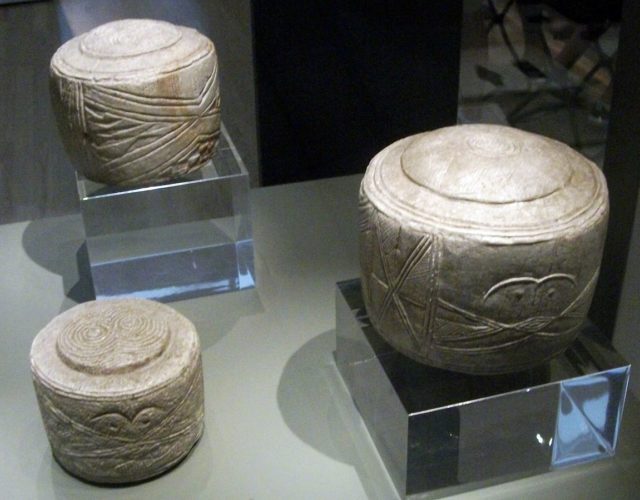
Although the faces may represent important members of the local clan or they may be a type of children’s toy that has uniquely survived, the purpose of the drums remains unknown.
Four years after the discovery, the mysterious objects along with other parts of his collection were donated by Greenwell to the British Museum.
